How To Clean Glass Top Stove Without Breaking The Bank
Important Note: When you buy through our links, we may earn a commission. As an Amazon Associate we earn from qualifying purchases. Content, pricing, offers and availability are subject to change at any time - more info.
Key Takeaways
- Don’t use anything abrasive on your glass top stove. If you wouldn’t clean your reading glasses with it, don’t use it on your glass top stove.
- Try to clean up cooking spills as soon as possible after they happen. This will give them less time to dry out and get burned onto the surface.
- Keeping your glass top stove in mint conditions is a snap if you know what to use.
- Avoid using any ammonia-based cleaners, even if it is made for glass. It could damage your surface and cause fumes when the plates are heated.
Keeping your glass top stove shiny adds visual appeal to your kitchen area. Like all glass, your stovetop can look sleek and magnificent when it is clean, but pots boil over, sauces may splash and burn, and this showpiece surface can quickly become a tricky mess to restore to its former glory. There are all sorts of specially formulated products that you can buy to keep it clean, but if you know what to do, you can keep it sparkling at a fraction of the cost. We have some cleaning hacks that are inexpensive, easy, and work!
Advertisement
Inexpensive Ways To Clean Your Glass Top Stove
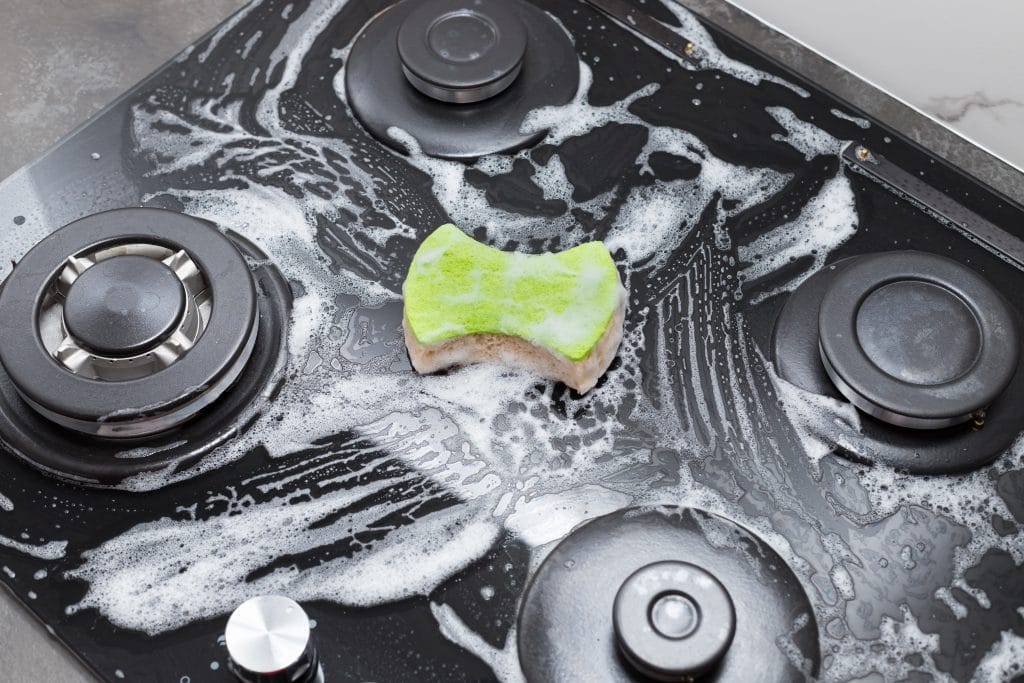
Cleaning up after cooking is a chore that most of us don’t look forward to. Drips and splashes made during food preparation can come back to haunt you long after the meal, especially if they have dried out and become glued to your cooking surface.
Because they have a highly reflective surface, glass top stoves show grime and marks quickly. It is therefore essential to keep it shiny as a scratched or dirty stovetop can affect the entire look of your kitchen. Glass cleaners like Windex should never be used as they can damage the surface of your stove and result in stains or streaks.
You don’t have to spend a fortune on cleaning products to keep your glass top stove looking its best. Plenty of household items will dissolve, even stuck-on food, and won’t damage the glass surface. Let’s go through some home hacks to quickly clean the surface of your glass top stove without purchasing any special products.
White Vinegar
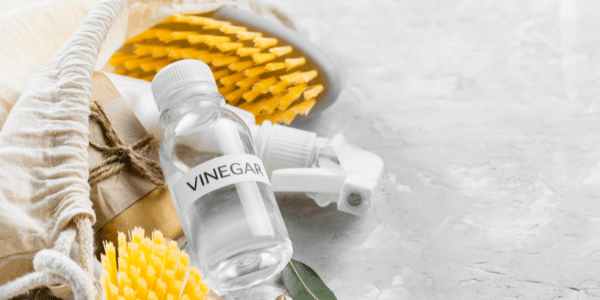
- Vinegar can be used as a spray every day with a soft cloth
- Use undiluted. Spray it on and wipe it off.
You probably have one of the best top stove cleaning products in your kitchen cupboard already. White vinegar is a powerful cleaner that is completely non-abrasive, so it is ideal to use as an everyday surface cleanser. Besides just cleaning, it also works effectively as a degreaser, so it’s perfect for cleaning after you’ve been frying using oil.
Advertisement
Pair regular white vinegar up with a microfiber cloth or sponge to restore a fresh shine after each use. An added advantage is that your clothes and sponges will stay fresher and won’t get that nasty, musty smell so commonly found in dish sponges after they have been around for a while.
Baking Soda
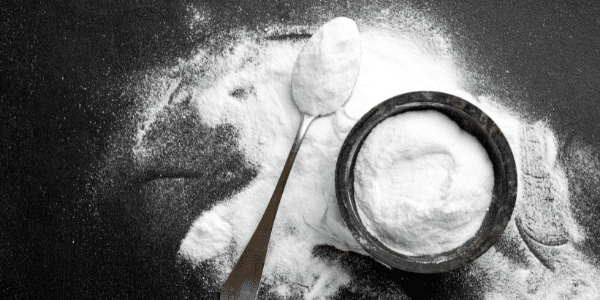
- Use with vinegar to give a deep clean and remove burnt-on food
- Gentle abrasive that won’t scratch your glass stovetop
- Your stove must be completely cool before using this method
When your glass top stove surface needs a deep clean, spray it with vinegar and then sprinkle it with a layer of baking soda. There will be a really cool bubbling reaction as the baking soda and vinegar mixture gets to work lifting tough grime.
Next, soak a towel in hot water. Wring it out thoroughly and spread it over the top of the stove. Leave it for at least 15 minutes before removing the towel. The caked-on debris will have softened, and you can wipe it off. Give your stove a final spray with vinegar to restore its shine.
Hydrogen Peroxide
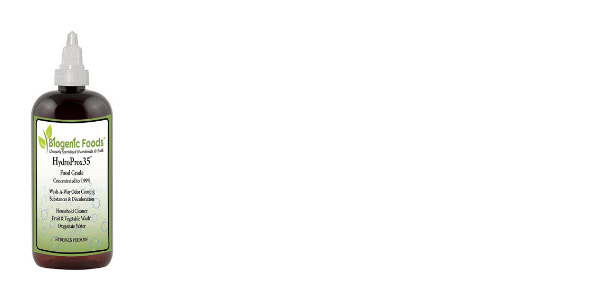
- It can be used as a spray diluted with water for an everyday spray
- For burnt-on debris, use
- with baking soda for a powerful deep clean
There are two ways to use hydrogen peroxide to clean your glass top stove. The first way is to create an everyday spray that you can use on all your kitchen surfaces. Add 1 cup of hydrogen peroxide to 2 cups of water. Mix in 2 – 3 teaspoons of lemon juice or lemon essential oil and put it in a spray bottle. Use this lemony fresh-scented cleaner on your glass top stove and wipe it with a microfiber cloth to create a streak-free shine.
Hydrogen peroxide can also be used to tackle tough, sticky burnt-on grime. Sprinkle a layer of baking soda over the surface of the stovetop, and then spray on a coating of hydrogen peroxide. Use a long-soft scrubber to combine it on the surface of your stove. Then let the combination work its magic for approximately 5 minutes before wiping it off. Be sure to clean it off before the solution dries out and sticks to the stovetop!
Dawn Dishwashing Liquid
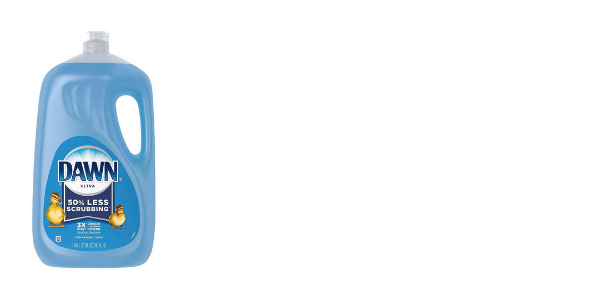
- A handy, anytime cleaner for a dirty glass stovetop
- Great for degreasing and delivers a high shine finish
For this method, all you will need is a soft cloth or sponge, some warm water, and a squirt of Dawn Dishwashing Liquid. Mix the Dawn and the water in a small bowl and repeatedly dip and agitate the mixture with your sponge until suds form. That is when it is ready.
Advertisement
Apply it to your stovetop only when the surface has cooled down completely. Apply a generous amount and wipe with the sponge, repeating the movement over tough spots. Then wipe up any excess moisture by moping and wringing out over the sink. If a residue remains, rinse the stovetop with a damp cloth or paper towel before drying it.
Lemon & Baking Soda
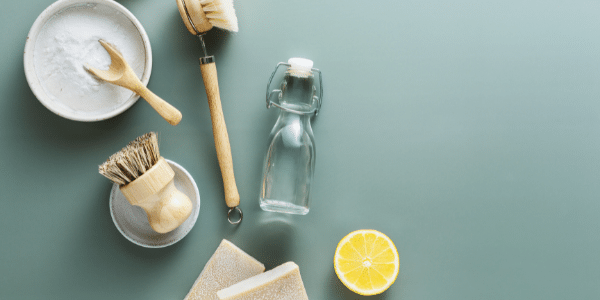
- The lemon works as both a cleaning agent and the applicator
- The powerful combination of the acidic lemon juice and the baking soda powers through surface grime on your glass top stove
Lemons have many cleaning applications, and they are excellent to use in the kitchen because they also deliver a citrusy burst of freshness. If you need a gentle scourer that won’t scratch but will pack a punch on the surface of your glass top stove, then grab a lemon and get to work.
Cut the lemon in half and coat the flat surfaces with a thick layer of baking soda. Then rub it over the top of your greasy stovetop. Use small circular motions over any stubborn patches and work from one side of the stovetop to the other to avoid missing parts. In spots where you need more cleaning power, squeeze the top of the lemon to deliver a shot of pure lemon juice power.
When you are finished, use a damp cloth to remove the lemon juice and baking soda residue from the stovetop.
Magic Eraser Sponge

- It can be used just with water.
- Non-abrasive and work effectively to clean glass surfaces.
Magic eraser cleaning pads are almost magical in their versatility around the home. They can be used to clean surfaces like walls to bathtubs. There are many brands available, like these from Mr. Clean. And the best part of your glass stovetop is that they will work perfectly and don’t need any added cleaners.
Simply wet the sponges, squeeze them and wipe the surface you want to clean. These are great for routinely wiping down the glass surface when you finish cooking to keep your stovetop gleaming.
Toothpaste
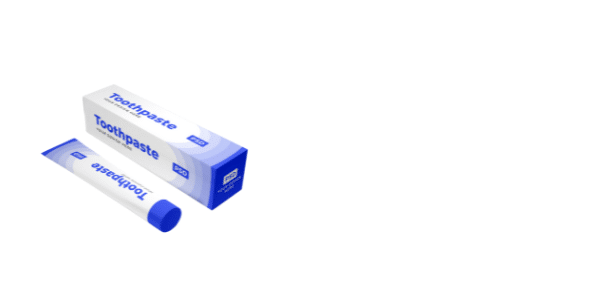
- A convenient method to treat small challenging areas of burnt-on food
- It may not be suitable for use in larger areas
Regular toothpaste can be safely applied with your finger or soft applicator to any bits of gunk that have welded themselves to the top of your stove. Work it into the area and leave it to cure for about 15 minutes. Then add a squirt of water and agitate the mark. It should dissolve. Wipe away all traces of the toothpaste from your stovetop using vinegar or peroxide spray.
Advertisement
Razor Blade
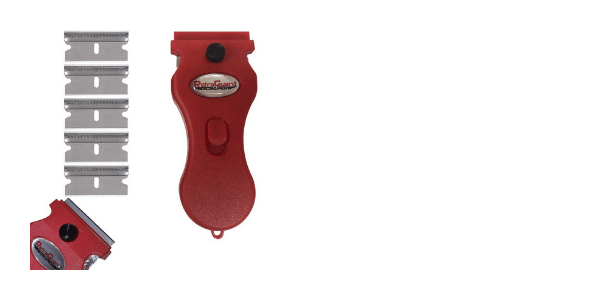
- Great for removing clumps of burnt-on gunk
- Ensure that the razor blade is sharp and do not apply a lot of pressure while using it, or it can scratch the glass surface.
Glass top stove surfaces are shiny and flat. This should make them easy to wipe clean, but some messes are too stuck to remove with any dissolving agents. That’s when you can use the razor blade method to scrape away bits that are stuck carefully.
The razor blade method works well when you have tried everything else. Use a safety razor blade scraper like this one from Werxrite to move any lumps and bumps from your glass stovetop quickly. Set the blade at the flattest surface possible to run over the top of the stove without scratching it. Always ensure that the blade you have fitted is super sharp so that it can effectively cut away bits of gunk.
Related Questions
Food burnt on a glass top stove can be tricky to remove as it gets stuck to the surface as it burns. The result is a layer of matte black bits that stand out sharply compared to the rest of the shiny glass surface.
The best method to remove black bits is baking soda and vinegar. Sprinkle the stovetop with baking soda, and then spritz it with white vinegar. The mixture will fizzle spectacularly as the vinegar hits the powdery layer of baking soda. Continue until the whole area is coated.
Then soak a large towel in hot water. Wring it out and spread it to cover the surface of the stove. Let it work for at least 15 minutes. Then remove the wet towel and wipe the surface to remove any mixture residue.
If any of the raised bumps of debris are still stuck, they would have softened up significantly while soaking. Carefully remove them using a razor blade at a low angle to the stove’s surface. Then shine the glass surface using vinegar and a soft cloth.
Can You Remove A Scratch From A Glass Top Stove?
Glass top stoves do get scratched from time to time. This often happens if you use heavy cookware like cast iron or other heavy pots that scrape over the surface. If you have noticed some minor scratches, you can reduce their appearance using one of two household products.
- Toothpaste – regular white toothpaste that contains baking soda works best for this. Gel types aren’t suitable. Using a soft, damp cloth, rub a good squirt of toothpaste into the scratches using small circular motions. Wipe the area clean with a soft, wet cloth. You can continue to reapply and repeatedly wipe over the scratches.
- Baking soda – mix baking soda and water to make a thick paste and apply to the scratches. Then using a clean cloth, rub the paste into the scratches. Use small, firm movements to work it in. Wipe off any excess paste when you are finished using a damp cloth.
If neither of these methods is effective, the scratches are probably quite deep, and you will need an orbital sander to buff them out.
What Will Damage My Glass Stovetop?
Glass stovetops can add a sleek elegance to a kitchen setting, except if it is visible grimy, or scratched. If you have one of these stovetops, here are some things you need to avoid to prevent damaging the gorgeous sheen.
- Never use abrasive cleaners. It can be tempting to grab a scourer or steel wool to obliterate a blob of stuck-on gunk, but this can quickly scratch the surface.
- Do not use glass cleaner – Glass cleaners like Windex or others that you may use on your bathroom mirrors often contain chemicals like ammonia. This is damaging to the surface layer of the stove, and it may result in toxic fumes if you forget to wipe it all off.
- Avoid adding cleaning chemicals while the stovetop is still hot – While some substances like sugar are easier to clean off when they are warm. It can usually be quickly wiped off with a damp cloth. Only add chemicals and clean thoroughly when the stovetop has completely cooled down.
- Place heavy items on the stovetop carefully – While you need to use your stovetop and cooking is a hands-on, interactive activity, always remain aware of your stovetop. Don’t use it as part of the counter for activities like cutting or keeping your stirring spoon.
- Do not slide pots over your stove – This is especially important if you use heavy pots like cast iron. Sliding it over will invariably scratch the shiny surface of your stove. If you need to move a pot to a different spot on the stove, use the handles to lift it.
Always clean your stovetop after you use it – Leaving a food mess to dry out and reheat next time you cook is likely to bake it on. This will make removing it more difficult.

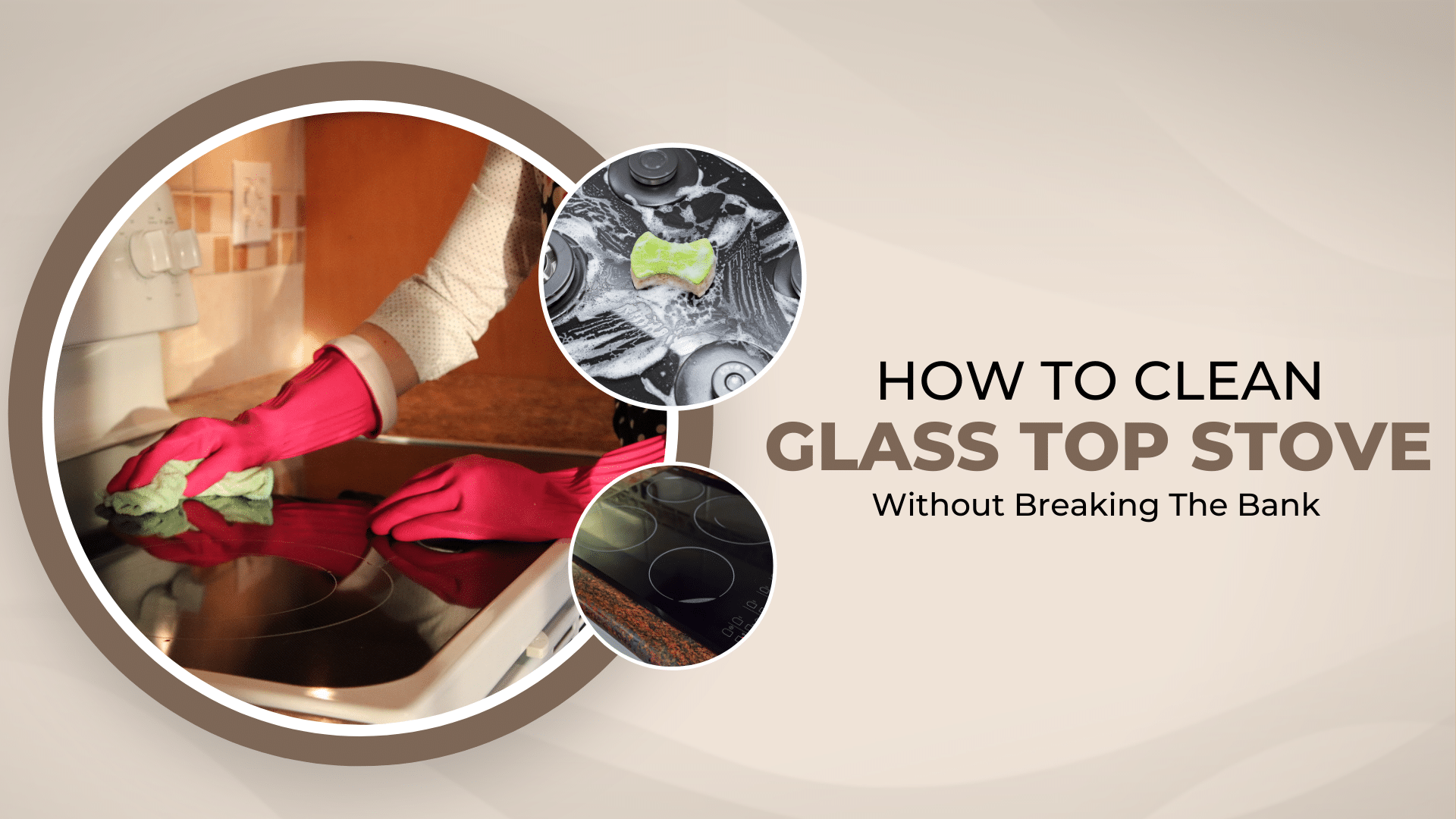
 Please Support Me on Ko-fi
Please Support Me on Ko-fi